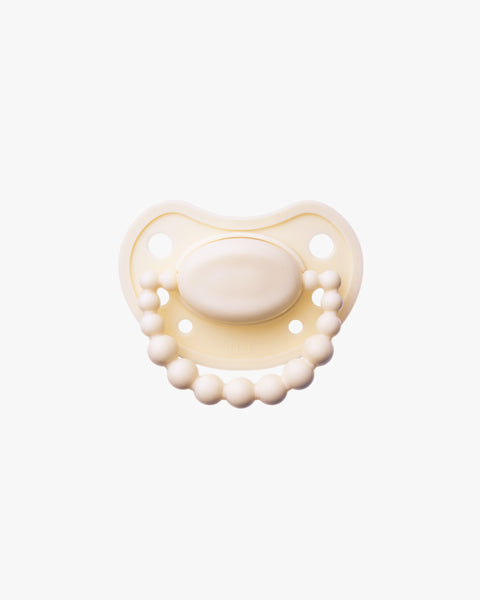What are polyps (and should you be afraid of them)?
A polyp is a nodular growth that grows from the mucous membranes. Like any such change, it can (but does not have to) cause a number of unpleasant symptoms depending on where it is located. The following text is devoted specifically to polyps of the reproductive organs, which originate from the mucous membranes lining the cervical cavity or canal. Fortunately, they are mostly benign changes - only a small percentage of diagnosed polyps have signs of cancer.
Polyps can be:
- pedunculated – with a visible, protruding pedicle on which they are attached,
- sessile – spherical in shape, protruding above the substrate.
Uterine polyps – division according to clinical picture
Due to the clinical picture, uterine polyps are divided into:
- hyperplastic – they have an oval, rounded shape and reach sizes of up to several centimetres; they are usually pedunculated, and their surface is covered with reticular blood vessels;
- atrophic – cystic-glandular polyps; the glands that compose them are filled with liquid content; most often found in postmenopausal people;
- functional – they are usually the result of abnormal proliferation (multiplying of cells) and shedding of the uterine lining; they have an uneven, white surface with numerous holes;
- adenomyotic – large polyps composed of smooth muscle, vascularized (they have many thin-walled arteries, which, when ruptured, cause heavy, abnormal intermenstrual bleeding); a variety of this type of polyp is adenomyotic polypoid adenomyoma , which causes heavy bleeding and grows relatively quickly;
- atypical – small polyps with a characteristic, irregular shape with disrupted vessels; in most cases, atypical polyps contain cancer cells.
Depending on their location, we distinguish between cervical polyps and endometrial polyps (growing in the uterine cavity).
Symptoms of polyps on reproductive organs
Polyps often do not cause any symptoms. Most people find out about their presence by accident, during a routine gynecological examination.
The presence of a polyp may cause:
- various types of abnormal bleeding – prolonged menstrual bleeding, bleeding between periods, and so on;
- spotting after intercourse and vaginal discharge (purulent or whitish vaginal discharge, sometimes with blood); polyps can disrupt the mucous membrane of the cervical canal and cause increased mucus production;
- pain in the lower abdomen (applies to larger polyps).
Because the symptoms mentioned are non-specific and may indicate many other serious diseases, if they occur you should not delay a visit to a gynecologist.
Cervical polyp
Cervical polyps arise as a result of overgrowth of the mucous membrane. They are benign in nature – the risk of malignancy is only 0% to 0.01%. A cervical polyp usually takes the shape of a teardrop, and its color ranges from pink to purple. The surface of such a polyp is smooth and shiny. As for size – it varies. They usually reach from a few to several dozen millimeters.
Types of Cervical Polyps
- Endocervical polyps – arise from glandular cells in the cervical canal; usually diagnosed in premenopausal people.
- Ectocervical polyps – originate from the epithelial cells of the cervical canal and mainly affect postmenopausal people.
Where do cervical polyps come from?
The answer to this question is not obvious. There are many theories about what can cause cervical polyps. The most common potential causes include:
- increased estrogen levels,
- genetic factors,
- intimate infections and chronic cervicitis.
An increased risk of developing cervical polyps applies to people who are obese, diabetic or hypertensive.
Cervical polyp – diagnosis
During a gynecological examination using a speculum, it may turn out that a lesion resembling a spherical lump protrudes from the cervical canal. An additional transvaginal ultrasound allows to exclude other diseases. The final diagnosis that this lesion is a cervical polyp is made after its removal and histopathological tests.
Cervical Polyps – Treatment
The basic method is to twist the polyp. The procedure is performed in an outpatient setting (in selected clinics) or in a hospital, under local or general anesthesia. Using a speculum inserted through the vagina, the gynecologist grabs the polyp with an appropriate tool (scalpel, scissors or forceps), twists it and removes it.
In addition, among other things, to make sure that the polyp has been completely removed (or to remove lesions invisible to the naked eye), curettage of the cervical canal is performed. This is also a practice that is extended to people with an increased risk of possible abnormalities in the uterine cavity.
The excised lesion is then sent for histopathological examination to exclude the presence of cancer cells.
Sometimes, a cervical polyp falls off on its own, for example during intercourse, menstruation, or even childbirth .
Endometrial polyp
It arises from an overgrown fragment of the uterine lining and takes the form of a club-shaped nodule (or nodules). Endometrial polyps reach sizes from a few to a dozen or so millimeters.
The frequency of such changes increases with age. Additionally, the detection of a polyp in the postmenopausal period is associated with a greater risk of the change becoming cancerous.
The reasons for their formation…
…are also not clear-cut. Polyps in the uterine cavity are usually associated with hormonal fluctuations (estrogen level disorders). Hence, the higher frequency of polyp diagnosis in people aged 30 to 50 (and during menopause ).
Recognition
Endometrial polyps are not visible during an examination on a gynecological chair using a speculum. More information can be obtained after a transvaginal ultrasound, especially right after menstruation, when the exfoliated endometrium is still thin. If the ultrasound shows an abnormal image of it (and not specifically a polyp), the patient is usually qualified for curettage of the uterine cavity. Of course, many variables influence this (age, reported complaints).
If a polyp is visible on ultrasound, hysteroscopy is recommended. In this case, appropriate optical instruments are inserted into the uterine cavity through the vagina and cervix, and the lesion is cut off and removed.
Endometrial polyp removal
Polyp removal can be performed by surgical hysteroscopy. It is performed in a hospital setting (the patient is admitted to the ward) or on an outpatient basis (in a doctor's office). Hysteroscopy is performed under short-term general anesthesia (after intravenous administration of medication, the patient sleeps through the procedure) or under local cervical anesthesia. After surgical hysteroscopy, vaginal bleeding may occur for about 2 weeks - however, this is not a cause for concern.
Another method is the classic curettage of the uterine cavity (abrasion). It is performed in a hospital or outpatient setting, under general anesthesia. During the abrasion, the doctor dilates the cervix and inserts a tool into the birth canal to remove abnormal uterine tissue. The consequence of curettage may be minor vaginal bleeding or mild lower abdominal pain.
The obtained material is sent for further diagnostics in order to exclude the presence of cancer cells. Any continuation of treatment depends on the results of the histopathological examination, the results of which ultimately define the nature of the change.
In the case of endometrial polyps, pharmacological treatment is also possible. It can be used in patients with recurrent polyps that have been previously verified histopathologically, and the cause of their regrowth is hormonal disorders.
Genital Polyps vs. Fertility
Can their presence be responsible for problems with getting pregnant?
Untreated endometrial polyps can sometimes cause infertility, as they can make it difficult for a fertilized egg to implant. However, this is not a hard and fast rule – in some cases, getting pregnant is not associated with any problems, and the polyp does not cause any unpleasant symptoms.
At this point, it is worth mentioning the so-called decidual polyp , which occurs only during pregnancy. It consists of fetal membranes, is located in the cervix and sometimes reaches several centimeters. It can result in spotting and bleeding, which during pregnancy - although they are disturbing - do not negatively affect the development of the fetus. For this reason, decidual polyps are not removed - this happens spontaneously at the end of pregnancy, during delivery.
I hope this text has calmed you down a bit – not every lumpy change is cancer, although the first encounter with such a diagnosis can indeed be devastating. Do not ignore any symptoms and run to a gynecologist – prevention is key!
Created at: 06/08/2022
Updated at: 15/08/2022













































































































































